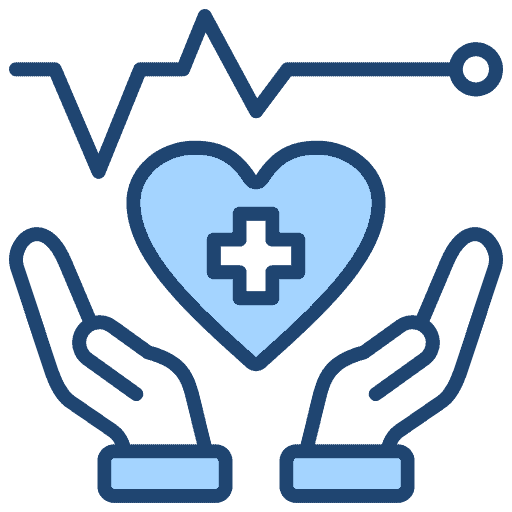
In EMS, working long, erratic shifts with a lack of sleep are often treated like a badge of honor. Long shifts, back-to-back calls, and mandatory overtime all feed into a culture that normalizes exhaustion. But the truth is, chronic sleep deprivation isn’t just tiring; it is actually toxic to you.
Every hour of missed sleep gradually accumulates as sleep debt, which changes your physiology and not in a good way. And it’s not just physical. Sleep-deprived brains have trouble filtering emotions and making decisions, which means more irritability, slower reactions, and a shorter fuse.
This is not good when lives are on the line. In EMS, sharpness matters. One delayed reaction or small calculation error can have big consequences. Research has shown that being awake for 18 hours straight can impair performance as much as a blood alcohol level of 0.05% – and at 24 hours, it’s roughly 0.10%, which is legally intoxicated in most states.
That’s why fatigue is now recognized as a patient safety issue. Studies on paramedics and other healthcare workers show links between sleep loss and increased medication errors, slower response times, and higher crash risks. It’s not a matter of motivation, it’s physiology.
Your circadian rhythm is your body’s internal clock, a 24-hour cycle that tells you when to be awake, when to rest, and even when to eat or release hormones. It’s driven primarily by light and darkness. When sunlight hits your eyes in the morning, it signals your brain to release cortisol to wake you up.
As evening falls and light fades, your brain releases melatonin, helping you wind down and prepare for sleep. Over time, this misalignment between your internal clock and your work schedule can lead to significant physiological stress.
While we sleep, our brains clear waste products, our hormones rebalance, and our cells repair themselves. Good sleep keeps our immune system working properly, our cardiovascular system functioning well, and our minds clear.
Missing sleep triggers the same stress response that your body uses when you encounter danger. The sympathetic nervous system fires up, preparing you for fight or flight. Hormones such as cortisol and adrenaline are released, leading to increased blood pressure and heart rate.
Another result is a slowing of metabolism and dysregulation of blood sugar. This is why people with untreated sleep apnea, whose sleep is frequently interrupted, are also prone to develop hypertension, diabetes, heart disease, and depression.
Guidelines for EMS agencies were developed and published by the National Highway Traffic Safety Administration (NHTSA) and the National Association of EMS Physicians (NAEMSP) in 2018. This followed a systematic review of hundreds of studies on fatigue, shift work, and emergency response performance. The goal was to give EMS agencies practical, research-backed recommendations to reduce fatigue-related risks for providers and patients.
Their recommendations were as follows:
Use of Fatigue/Sleepiness Surveys
EMS agencies should use validated fatigue and sleepiness assessment tools to measure provider fatigue levels both before and during shifts. To identify when personnel are too fatigued to work safely and to track patterns over time.
Examples of tools include:
Karolinska Sleepiness Scale (KSS)
Epworth Sleepiness Scale (ESS)
Pittsburgh Sleep Quality Index (PSQI)
In practice, providers might complete a brief digital or paper checklist at the start of their shift to gauge fatigue, similar to a preflight check in aviation.
Educate EMS personnel, which could be education incorporated into onboarding, continuing education, and wellness training, including topics like sleep hygiene, caffeine use, and managing shift rotations.
EMS workers should have the opportunity to take on-duty naps when workload and operational demands allow, especially during overnight shifts.
When possible, limit shifts to 12 hours. 24-hour shifts should be used only for low-volume services with protected sleep periods.
Access and education to strategic use of caffeine.
For EMS workers, sleep disruption is almost unavoidable. So, prioritizing quality sleep is essential for them. Keep a consistent sleep/wake schedule as much as possible, even on your days off. Try to get sunlight exposure when you wake up, this helps to reset your body’s clock.
Also, many people find a dark, cool, and quiet environment is better for sleep. Strategic naps can help, 20-30 minutes before or during a shift if possible. If you consume caffeine, have it early in the shift, not later, so it doesn’t interfere with sleep. Many people are sensitive to the sleep-disturbing effects of caffeine. Caffeine can help with alertness, but it is not a substitute for sleep.
Good sleep is the foundation of health, but it’s not the whole story. For EMS workers and other shift-based professionals, nutrition and exercise can make or break how well the body adapts to irregular schedules and circadian disruption. Think of sleep, diet, and movement as a three-part recovery system: when one is off, the others can help stabilize the balance.
Time your meals: Try to eat your largest, most balanced meal before your shift starts, when digestion is most efficient. Eat lighter, higher-protein snacks (like nuts, yogurt, or fruit) during the shift, and avoid heavy meals just before sleep.
Stay hydrated: Even mild dehydration worsens fatigue and headache.
Choose steady energy: Focus on complex carbs (whole grains, fruits, vegetables) and lean proteins. They keep blood sugar stable. Avoid sugary snacks or energy drinks.
Limit caffeine near the end of the shift: Caffeine blocks adenosine — the sleepiness hormone — and can delay melatonin release, making it harder to fall asleep later.
Avoid alcohol as a “sleep aid”: It may help you fall asleep faster, but it disrupts REM sleep and causes early awakenings, resulting in more fatigue.
Exercise is one of the most powerful tools for combating the effects of sleep loss and circadian disruption. It improves cardiovascular function, helps regulate hormones like cortisol and insulin, and boosts mood through endorphins and serotonin release. Even light activity, like walking a few laps around the station or stretching between calls, can reduce stress hormones and improve focus. The goal isn’t athletic performance, it’s physiological balance.
References:
Farcas, Andra. Zaidi, Hashim. 2019. NAEMSP (the Lack Of) EMS Sleep and Wellness NAEMSP available at https://naemsp.org/2019-11-26-the-lack-of-ems-sleep-and-wellness/?utm_source=chatgpt.com
Accessed November 11, 2025.
Kırılmaz, M., Kılıç, T., Kılıç, S., et al., 2021. Impact of night shifts on sleeping patterns, psychosocial and physical health among healthcare workers. BMJ Open, 11(9), e046036. Available at: https://bmjopen.bmj.com/content/11/9/e046036 Accessed on November 10, 2025.
Lamond, N. & Dawson, D., 1999. Quantifying the performance impairment associated with fatigue. Journal of Sleep Research, 8(2), pp.255-262. Available at: https://fatiguemanagersnetwork.org/wp-content/uploads/Lamond-et-al.1999_Quantifying-Performance-Impairment-Associated-with-Fatigue.pdf
Accessed 11 November 2025.
Patterson, P. D., Higgins, J. S., Van Dongen, H. P. A., Buysse, D. J., Thackery, R. W., Kupas, D. F., … Martin-Gill, C. (2018). Evidence-Based Guidelines for Fatigue Risk Management in Emergency Medical Services. Prehospital Emergency Care, 22(sup1), 89–101. https://doi.org/10.1080/10903127.2017.1376137 Accessed November 11, 2025
Patterson, P.D., Hilditch, C.J., Martin, S.E., Roach, D.G.L., Weaver, M.D., Okerman, T.S., et al., 2024. Comparison of 45-min nap versus no-nap during simulated night shift work on endothelial function: a randomized crossover feasibility trial. Pilot and Feasibility Studies, 10, 137. Available at: https://pilotfeasibilitystudies.biomedcentral.com/articles/10.1186/s40814-024-01569-2 Accessed November 10, 2025.
Patterson, P.D., Martin, S.E., Brassil, B.N., Hsiao, W-H., Weaver, M.D., Okerman, T.S., et al., 2023. The Emergency Medical Services Sleep Health Study: a cluster-randomized trial. Sleep Health: Journal of the National Sleep Foundation, 9(1), pp.64–76. Free full-text version available via U.S. DOT repository: https://rosap.ntl.bts.gov/view/dot/65893 Accessed November 11, 2025.
Silva, A., Sousa, H., Santos, J.V., et al., 2025. A systematic review of literature on the association among sleep, cortisol level and cardiovascular health within the healthcare shift-worker population. Biomedicines, 13(10), 2539. Available at: https://www.mdpi.com/2227-9059/13/10/2539 Accessed November 11, 2025.
Song, M., Zhang, Q., Zhang, L., Wang, X., Chen, X. & Qin, Y., 2025. The impact of sleep deprivation on cognitive function in healthy adults: insights from auditory P300 and reaction time analysis. Frontiers in Neuroscience, 19, 1559969. Available at: https://doi.org/10.3389/fnins.2025.1559969 Accessed on November 11, 2025.
Xi, J., Ma, W., Tao, Y., Zhang, X., Liu, L. & Wang, H., 2025. Association between night shift work and cardiovascular disease: a systematic review and dose–response meta-analysis. Frontiers in Public Health, 13, 1668848. Available at: https://doi.org/10.3389/fpubh.2025.1668848 Accessed on November 11, 2025.

